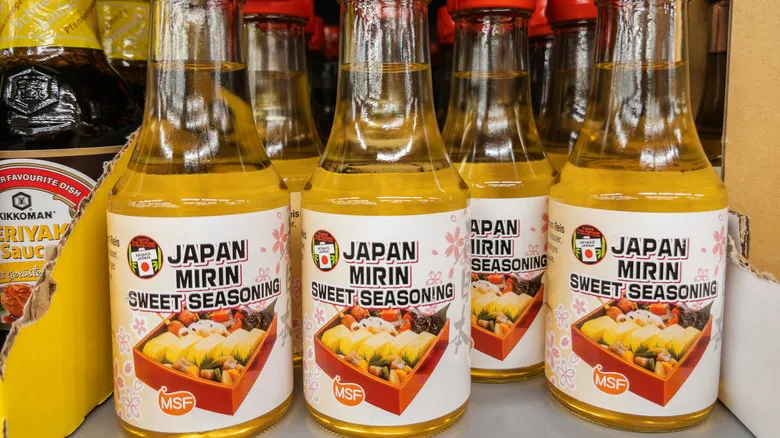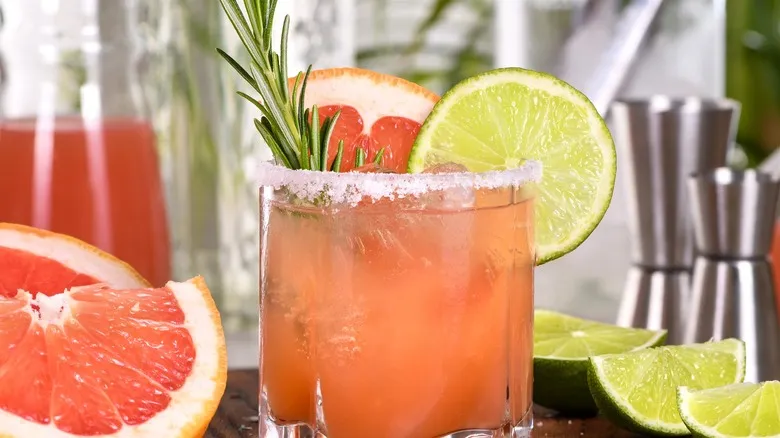Shochu or mirin are better sake alternatives

While soju may not be the best alternative to sake, shochu can provide a comparable experience if you have it available. Shochu is a Japanese spirit typically crafted from rice, sweet potatoes, or barley, and like sake, it is distilled using koji, a mold that helps convert starches into sugars. Although it might not sound appealing, koji is the key ingredient that imparts a rich and distinctive umami flavor. Shochu works wonderfully in sauces; just a teaspoon can introduce a delightful tangy sweetness. It also complements stews, fish, and vegetables, making it a suitable substitute for sake. If you decide to incorporate shochu into your dish, opt for a barley-based variety, as it offers the most neutral taste.
However, shochu isn't your only option. Another rice wine that can serve as a substitute for sake is mirin, which you may already have in your kitchen. Similar to sake, mirin provides a comparable depth of flavor but has a higher sugar content, resulting in a sweeter and less dry profile with lower alcohol content. Therefore, if you choose to use mirin instead of sake, be sure to adjust the sweetness in your recipe accordingly. It can elevate fried rice to new heights or add a touch of sweetness to your scrambled eggs.
Recommended

The Best Spices To Used For Spiced Rum

The Best Type Of Tequila For Palomas

Turn Tequila Into A Vibrant Cocktail With An Unexpected Veggie Mixer

The Alcohol You Should Be Drinking Out Of A Flute Glass (Other Than Champagne)
Next up

